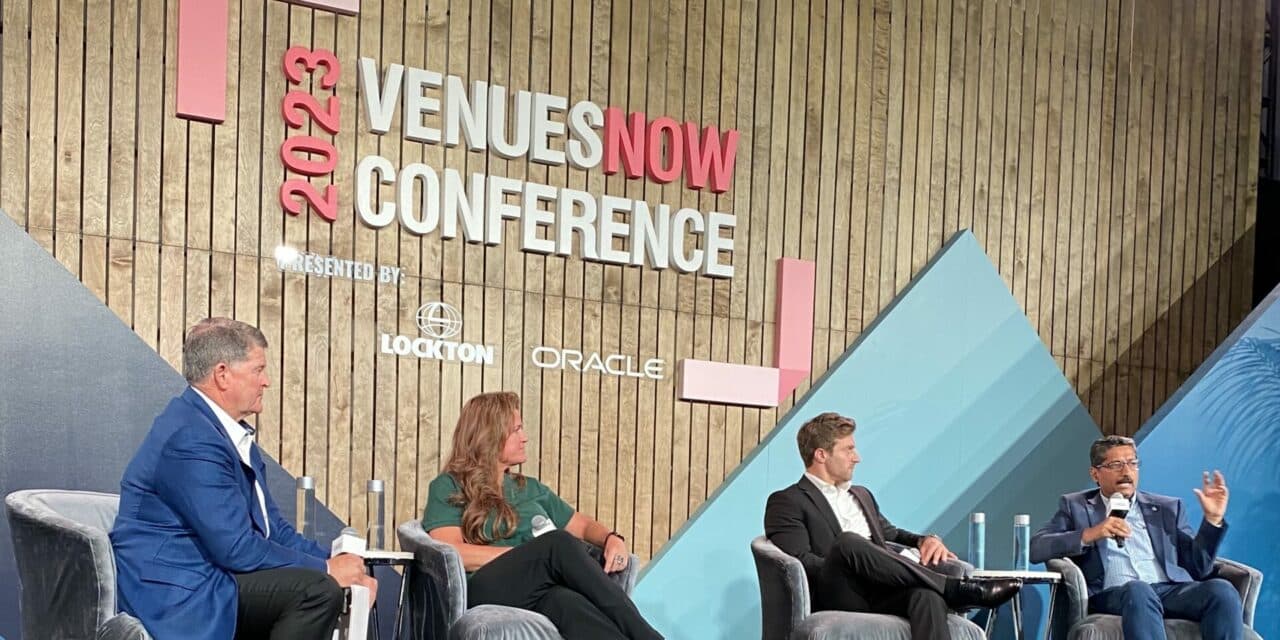SAFE AND CYBERSECURE?: The threat of AI being used in cyber attacks is growing according to at least one speaker on the VNC ’23 Panel, “Where Physical and Digital Converge: The Complex, diverse and dynamic threat landscape.” (VN Staff)
It’s a brave new, scary world
Just as artificial intelligence offers a host of new business opportunities, it is also a powerful tool in the hands of bad actors.
That was one of the takeaways from a VNC ‘23 panel entitled “Where Physical and Digital Converge: The Complex, diverse and dynamic threat landscape.
AI-powered cyber attacks will be an expanding threat going forward, said panelist Durga Kota, chief technology officer, Fujitsu North America.
“This is going to be a thing. Some of the threat actors have as much technology at their disposal as some of the best businesses,” he said. “So you’ve got to use AI in more positive, productive, ways in order to overcome some of the challenges that will get mounted by these bad actors using it. Certainly, that’s one of those big threats.”
He also said that through the use of quantum computing, bad actors will be able to decipher encrypted data and communications.
The explosion of available data raises challenges as well, said Nick Noone, CEO of Peregrine Technologies.
“It’s incredible that more organizations are able to deploy more sensors and systems that can collect and store data at lower cost and higher utility than ever before in history,” he said. In many ways, these systems and applications are already deeply embedded inside of critical institutions. The obvious question then becomes, what do we do with all that information? And how do we think about the management of it?”
Don’t look to government to get ahead of the challenges, Noone said.
“I think regulatory frameworks are so lacking the reality of what we see in the field, whether it’s the highest echelons of the Department of Defense, whether it’s an event space, whether it’s a law enforcement agency at the local level. The idea that whether it’s an FBI framework or HIPAA or cyber framework, the question is, what is it? How can the learnings be viewed as fundamentally dynamic and evolving?”
Jeanette Neyses, founder and CEO of The Baghera Group, said the interoperability of all the cool apps and platforms and the tech that is available to us out there is impressive, but there are often shortcomings.
“You do assessments of companies and organizations and their security programs or initiatives look like really cool, creative LEGO creations. And that’s not a bad thing. It’s kind of like tree rings; you can see the growth of that security program. That’s the keeping up with the technology as the evolution of it is so fast,” she said. “But the people side of that is having security experts within your space that have a level of skills, but oversight and a very proactive amount of engagement, to be able to keep up with those technologies and ensure that they do continue to work together, that they’re working together in the way that you intended them to.”
Moderator Mike Downing, former head of antiterrorism for the Los Angeles Police Department and now chief security officer with OVG’s Prevent Advisors division, said it is not lost on him that Prevent is so focused on physical threats, that cyber threats will require greater attention.
“This is kind of a blind spot for us,” he said. “We’ve always talked about, in this business, we’re on the private side, and we’re not first responders. We were first responders for a period of time, but we we look at ourselves as first preventers. We’re trying to create a prevention culture, both on the physical side, and now we have this other challenge.”
Contacted after the panel discussion ended, Neyses was asked if one of the cyber threats that should be accounted for is a ransomware attack on a venue or ticketing system on the eve of a major live performance.
“Frankly, I’m surprised it hasn’t happened,” she said.
Editor’s note: This story has been updated.







